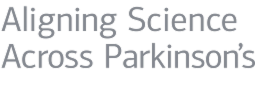fMRI tasks to explore emotion-motor interactions
By onCode for fMRI tasks designed to explore emotion-motor interactions—Active Escape and Approach-Avoidance tasks in the Socal Kinesia and Incentivization for Parkinson's Disease (SKIP) dataset.
Assay for Dual Rab GTPase binding to the LRRK2 Armadillo Domain
By onThe LRRK2 Armadillo domain contains multiple Rab GTPase binding sites. This assay shows that the sites can be occupied simultaneously.
CURTAIN—A unique web-based tool for exploration and sharing of MS-based proteomics data
By onLinks can also be reported in publications allowing readers to further survey the reported data. The authors discuss benefits for the research community of publishing proteomic data containing a shareable web-link.
pCAG-GST-ATG101-W110D/F112D
By onPlasmid: Expresses human ATG101 HORMA W110D/F112D mutant in mammalian cells.
Regulatory imbalance between LRRK2 kinase, PPM1H phosphatase, and Arf6 GTPase disrupts the axonal transport of autophagosomes
By onThe authors found that LRRK2-hyperphosphorylated RABs disrupt the axonal transport of autophagosomes by perturbing the coordinated regulation of cytoplasmic dynein and kinesin motors.
Data set of the manuscript “Neuronal hyperactivity-induced oxidant stress promotes in vivo a-synuclein brain spreading”
By onData set of the manuscript "Neuronal hyperactivity-induced oxidant stress promotes in vivo a-synuclein brain spreading."
H9 ES AAVS1-NGN2 FLAG-EEA1::TMEM192-HA
By onES cells were modified to produce iNeurons expressing FLAG-tagged EEA1 and TMEM192-HA. NEUROG2 construct was inserted into AAVS1 locus using CRISPR/Cas9. EEA1 was N-terminally tagged with a 3xFLAG tag.
Preparing feeder-free hPSCs for nucleofection
By onThis protocol describes the standard procedure preparing feeder-free human pluripotent stem cells (hPSCs) for nucleofection.
Evaluating endocytic rate in cells
By onAssess endocytic rate in cells using tagged transferrin (Alexa647) and flow cytometry readout.
H9 ES AAVS1-NGN2 TEX264-/-; PiggyBac-Keima-REEP5
By onES cells modified with CRISPR/Cas9 to lack TEX264, express Keima-REEP5 ER-phagy flux reporter, NEUROG2, and mKeima fluorescent protein. Derived from human embryonic stem cells at the blastocyst stage.
Western blot protocol for detecting ATP10B in mouse/rat brain
By onProtocol for detection of ATP10B in rat and mouse brain tissue by Western blotting.
Sample preparation for TMT-based total and phospho-proteomic analysis of cells and tissues
By onMass spectrometry-based proteomics and phosphoproteomics are highly sensitive and unbiased techniques to study the proteome and phosphoproteome at a global scale.
CRISPR-Cas9 screen in NIH-3T3 cells to identify modulators of LRRK2 function
By onThis protocol describes a pooled, CRISPR Cas9 screen to identify modulators of LRRK2 activity.
Modelling human brain-wide pigmentation in rodents recapitulates age-related multisystem neurodegenerative deficits
By onAuthors describe an animal model of human-like neuromelanin pigmentation. The animals display age-related neuronal dysfunction and degeneration affecting numerous brain circuits and body tissues.
SpatialBrain.org – a platform to view integrated data from Wade-Martins Laboratory of Molecular Neurodegeneration
By onAn open repository to access data and results from spatial and translatome expression profiling of basal dopaminergic neurons in mice (OVX and aging). More information can be viewed in published article Kilfeather & Khoo, et al. (2023) "Single-cell spatial transcriptomic and translatomic profiling of dopaminergic neurons in health, aging, and disease" Spatial Transcriptomic Analyses: - Cell Type Markers - SN/VTA Markers in Dopaminergic Neurons - Cell Number Changes in Age TRAP Analyses: - Dopaminergic Markers - Dopaminergic Ageing - Alternative Splicing in Dopaminergic Neurons Coming soon: Integration with iPS-derived dopaminergic transcriptomic datasets.
Flow cytometry-based measurement of mitophagic flux
By onAssociated with preprint: https://www.biorxiv.org/content/10.1101/2022.11.02.514817v1
Impaired dopamine release in Parkinson’s disease
By onEvidence indicates that impaired dopamine release can result from disruption to a diverse range of Parkinson’s disease-associated genetic and molecular disturbances and can be considered a potential pathophysiological hallmark of Parkinson’s disease.

